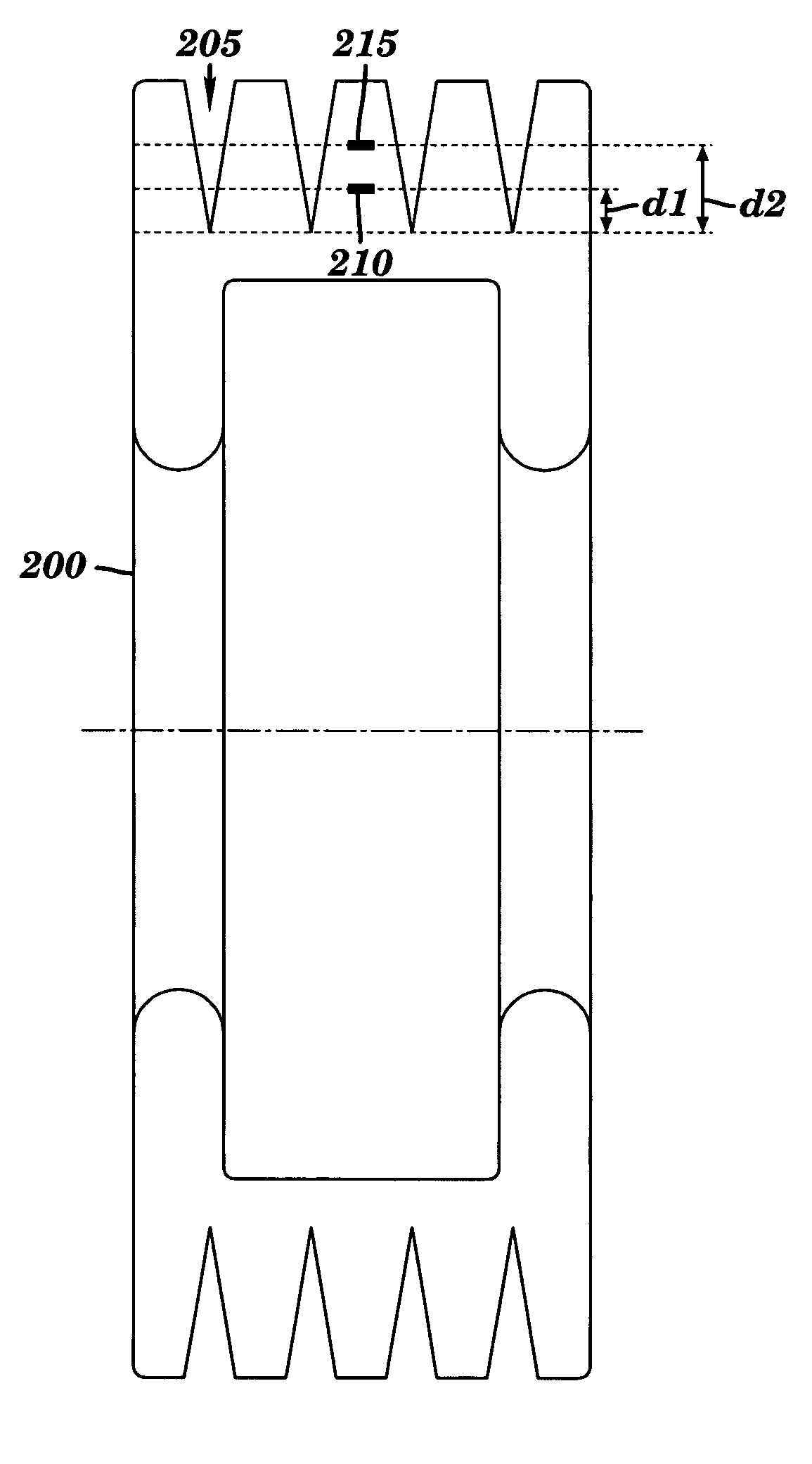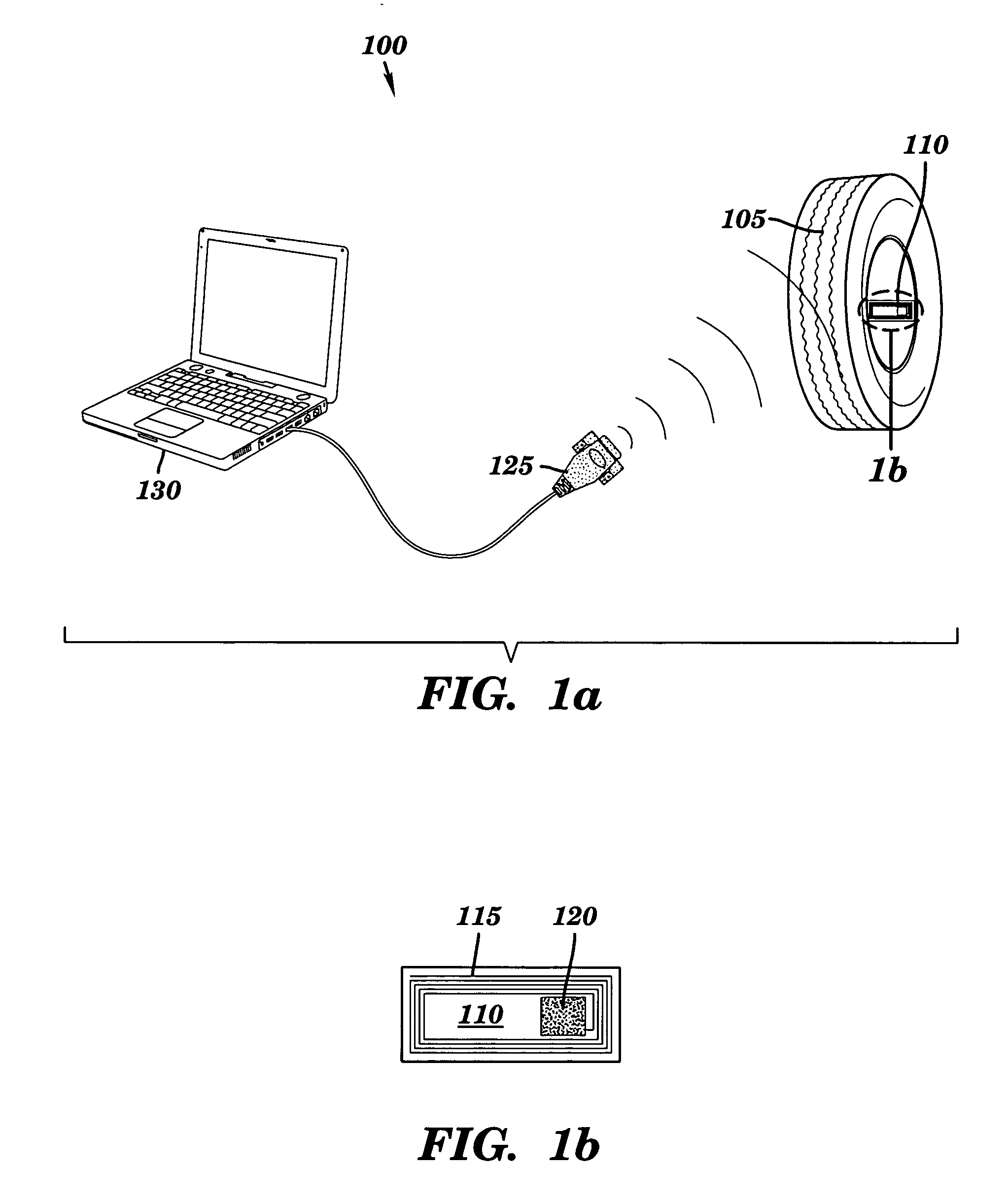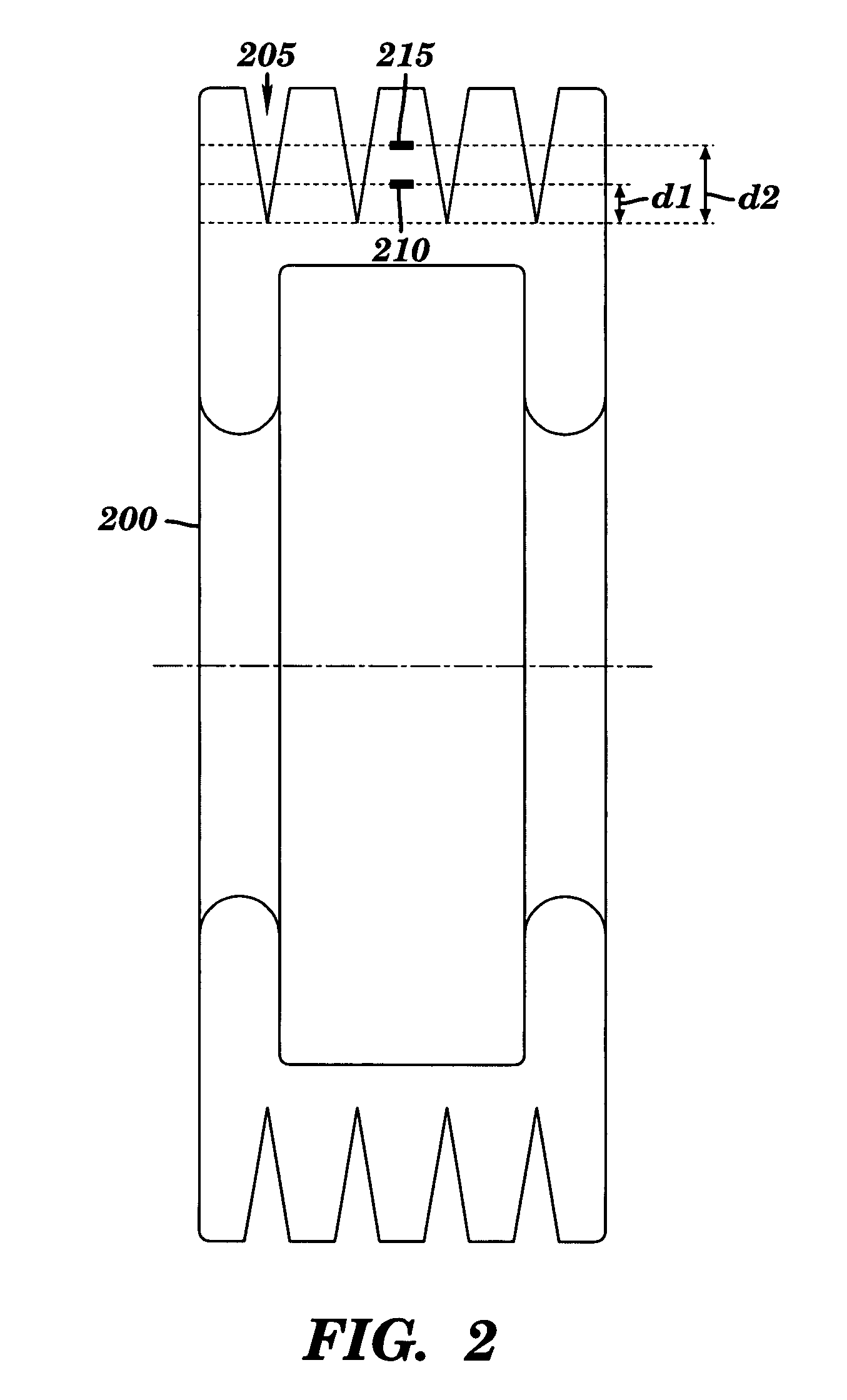Monitoring of wearing surface layer thickness
- Summary
- Abstract
- Description
- Claims
- Application Information
AI Technical Summary
Benefits of technology
Problems solved by technology
Method used
Image
Examples
first embodiment
[0039] In the present invention, the tire tread or surface to monitor comprises at least one RFID corresponding to at least one wear threshold. The wear level is given by the presence or absence of this at least one RFID. If several RFIDs are embedded within the tire tread or surface to monitor, the data contained in each of them must be different so that the presence of each RFID can be detected.
[0040]FIG. 2 depicts a cross section view of an example of a tire 200 having grooves 205 designed in the tire tread. The tire 200 comprises a first RFID 210 located at a distance d1 from the bottom of the grooves and a second RFID 215 located at a distance d2 from the bottom of the grooves. In this example, the RFIDs are inserted within the rubber mix but it must be understood that RFIDs can also be positioned and glued within the grooves. For sake of illustration, d1 is equal to the minimum legal treads (i.e., 1.6 mm), and d2 is equal to 3 mm which corresponds to a main change of the tire ...
second embodiment
[0056] The algorithms presented on FIGS. 4a and 4b, described supra, are also valid for this However, the values N and N(i) are not stored in the reader memory but are directly determined from the values stored in the detected RFIDs. Considering that values stored in the RFIDs are expressed as V(j), where j is an index corresponding to the rank of the RFIDs within a tire. Then,
N=maxj(V(j)) (4)
[0057] Likewise, considering that values stored in the RFIDs are expressed as V(i,j), where i is the index corresponding to the tire i, and j is the index corresponding to the rank of the RFIDs within the tire then,
N(i)=maxj(V(i,j)) (5)
[0058] In a third embodiment of the present invention, a particular RFID (e.g., the RFID that is located at the greatest distance from the periphery of the tire; i.e., the maximum distance from the exterior surface of the tire tread) is used to store additional information. Firstly, this additional information is the number of RFIDs that were embedded withi...
fourth embodiment
[0059] In the present invention, several RFIDs are distributed along the tire width, at approximately the same distance from the tire periphery, so as to control wear balance along the tire width. The tire width is oriented perpendicular to the tire thickness and perpendicular to the opposite sides of the tire. FIG. 6 shows an example of such a distribution of RFIDs along the tire width. As illustrated, a first set 508A of RFIDs (0-0 to 0-5) is embedded within the rubber in the tire left part and a second set 508B of RFIDs (1-0 to 1-5) is embedded within the rubber of the tire right part. By counting and comparing the number of RFIDs embedded within each set of the tire, one can determine if the tire wear is normal or abnormal (i.e., one can analyze tire wear balance along the tire width). For example, if the number of RFIDs belonging to each set is the same for all the sets or if there is only a difference of one RFID, one can conclude that the tire wear is a normal wear (i.e., the...
PUM
 Login to View More
Login to View More Abstract
Description
Claims
Application Information
 Login to View More
Login to View More - Generate Ideas
- Intellectual Property
- Life Sciences
- Materials
- Tech Scout
- Unparalleled Data Quality
- Higher Quality Content
- 60% Fewer Hallucinations
Browse by: Latest US Patents, China's latest patents, Technical Efficacy Thesaurus, Application Domain, Technology Topic, Popular Technical Reports.
© 2025 PatSnap. All rights reserved.Legal|Privacy policy|Modern Slavery Act Transparency Statement|Sitemap|About US| Contact US: help@patsnap.com



